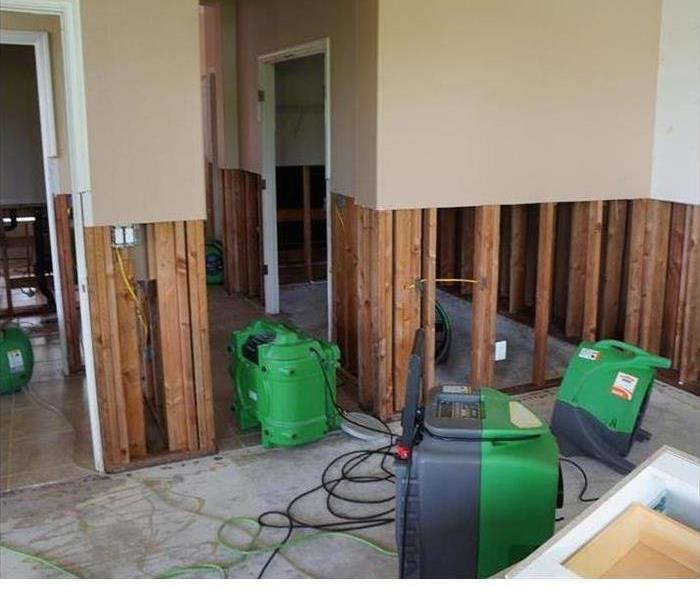Key water loss questions
11/15/2021 (Permalink)
When SERVPRO of Longview/Kelso receives the call for a water loss or emergency, We will ask you a few key questions like, "Where is the water coming from" and "How much of the area has it affected". Here at SERVPRO from the initial phone call, to when our technicians arrive. We are assessing the damage and categorizing the type of water and classifications. Assessing the severity of the damage is important to determine what is needed to start the restoration and water removal process. A few of the various reasons we categorize is: 1- To know the level of care our technicians must take to safely work. 2- Preparing what equipment or tools are needed to quickly respond to the job. And 3- To best advise you of other safety measures you may need to take and helpful advise to minimize damage if possible.
The 3 Categories and what they mean:
- Category 1water/clean water: A clean source like a broken water line, appliances, sink overflow ext. The water in category 1 in other words is considered sanitary and is not yet a substantial risk.
- Category 2 water/ gray water: Water is significantly contaminated and can be harmful if consumed. Sources that may cause this type of water damage include toilets, sump pumps, and sewage.
- Category 3 water/ black water: Unsanitary water that contains bacteria, untreated sewage, harsh chemicals and microbes. Flooding rivers and sewage backups are a couple sources that may cause this water damage but standing water and storm surges also are highly contaminated too.
We also use different classifications to help determine the extent of the water damage that you may have experienced. This is why we ask "How much has it affected". It's important because it helps us know what drying techniques to use, the amount of equipment to set-up and how long the drying process may take.
4 Water classifications:
- Class 1:The least harmful because affected materials absorb only small amounts of the water and involves less absorption and evaporation. Commonly only a small portion of a room is affected.
- Class 2: A larger amount of water that has a fast rate of evaporation. Which means carpets and pads are affected, however water has not wicked up the walls more then 24 inches. Water damage repairs are more difficult.
- Class 3: The water in this class has the fastest rate of evaporation and the greatest amount of water. It is commonly from overhead sources or sprinkler system. It can affect ceilings, walls, insulation, carpet/pad and subflooring. Class 3 is when the entire area is affected.
- Class 4: We often use this class for specialty drying situations. It affects materials with low permeance and porosity and can have longer drying times and methods. Types of damage can affect hardwood flooring, plaster and concrete.
We are prepared to help, no matter the category or class of your water emergency. We have seen it all!
SERVPRO of Longview/kelso is always ready when you need us. Trusted, local and ready to restore.
Your water damage needs are not going to wait, so why should you. Give us a call at (360)703-3884 and let our trained and certified water technicians do the rest





 24/7 Emergency Service
24/7 Emergency Service
